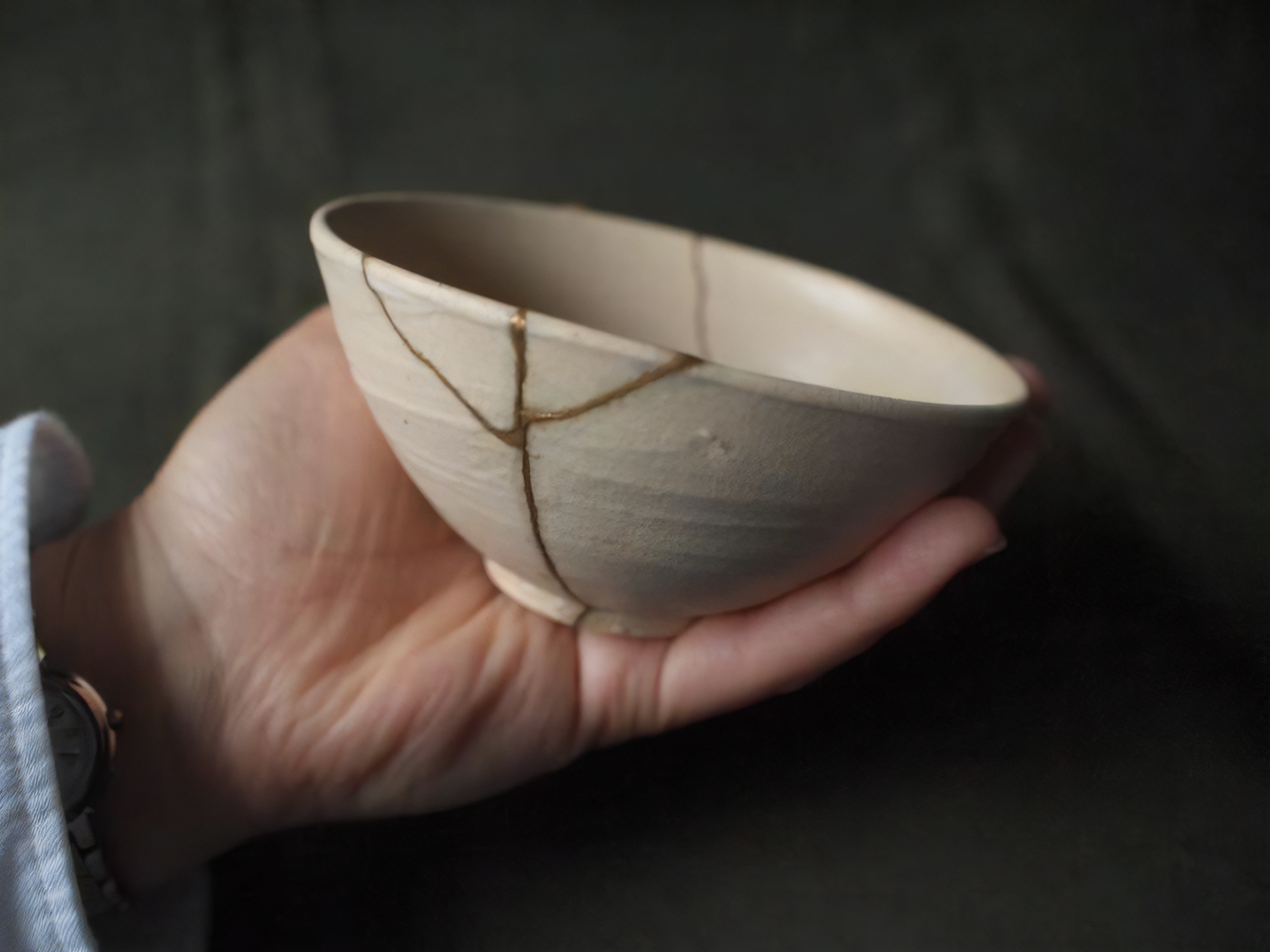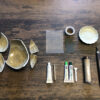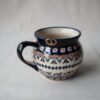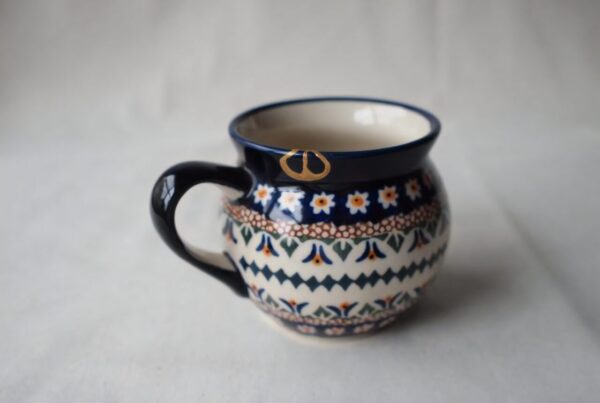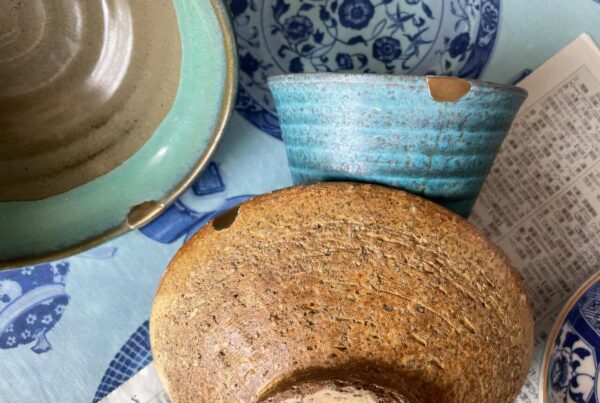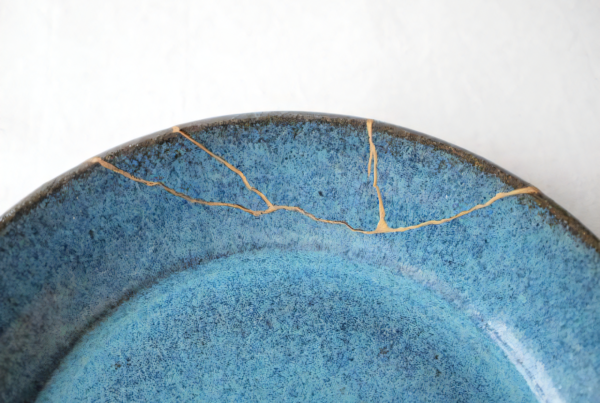Imagine breaking your favorite cup or plate – a moment of sadness, right? But what if that break could transform it into something even more beautiful?
That’s where kintsugi, a remarkable Japanese art form, comes in. Kintsugi (金継ぎ), literally meaning “golden joinery,” is the art of repairing broken pottery with gold powder.
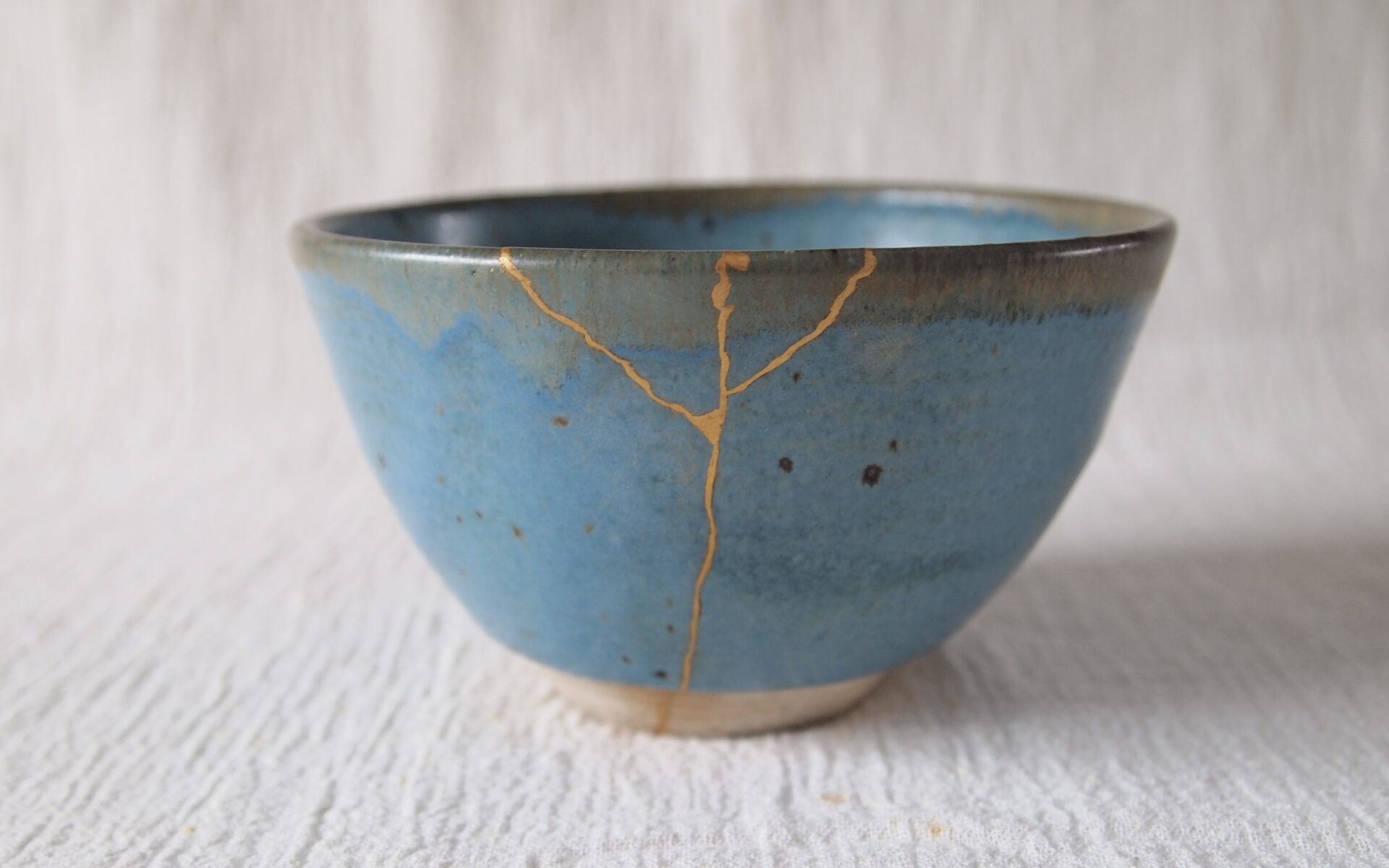
It’s not just about fixing an object; it’s about celebrating its history and giving it a new, unique beauty. Unlike traditional repairs that aim to hide breaks, kintsugi highlights them, creating an elegant web of golden lines that tell a story of resilience and transformation.
Through kintsugi, we learn to embrace flaws, making them part of the object’s intriguing history. So, let’s dive into the world of kintsugi, explore its history, techniques, and philosophical roots, and discover how this ancient art form is still relevant and inspiring in our modern world.
II. Historical Background and Origin
Kintsugi, a captivating aspect of Japanese culture, takes us back to the 15th century, a period renowned for its elegant tea ceremonies. This art form is deeply entwined with Japan’s appreciation for simplicity and beauty.
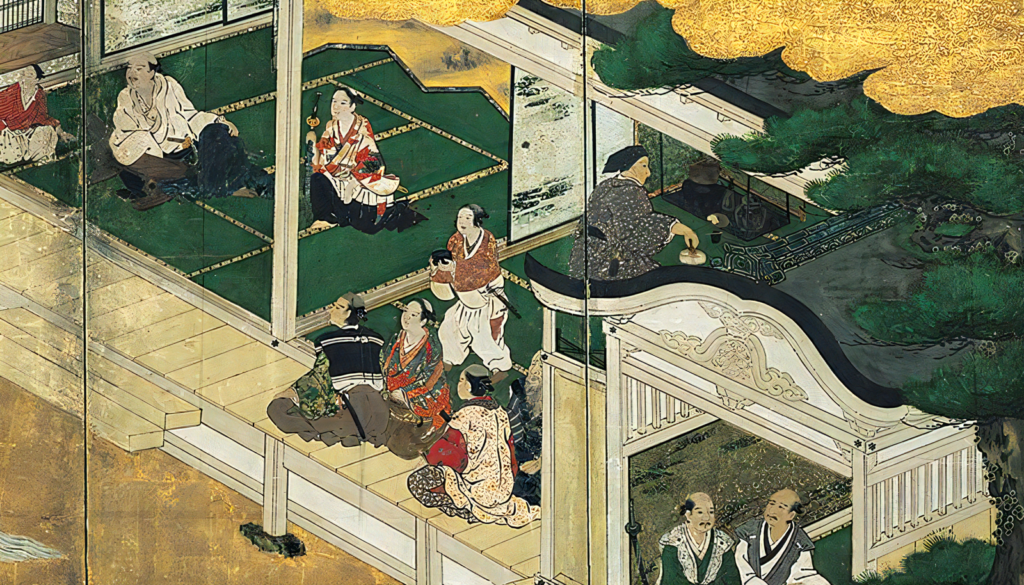
The narrative centers around Shogun Ashikaga Yoshimasa. After his beloved Chinese tea bowl broke, he sent it to China for repairs. There, it was mended using metal staples, a standard repair technique at the time. Yoshimasa, admired this method for its practicality and the distinctive appearance it lent to the bowl. This incident spurred Japanese artisans to develop more artistic and aesthetic repair methods, leading to the birth of kintsugi. In this technique, broken pottery is beautifully rejoined using gold, transforming the damaged into something uniquely beautiful.
Sen no Rikyu, a key figure in popularizing the tea ceremony, also played a significant role in promoting kintsugi. He championed the beauty of these gold-mended ceramics, viewing them as symbols of revival and resilience. Influenced by the principles of Wabi-Sabi and Zen, which find beauty in imperfection, Rikyu’s perspectives helped kintsugi gain prominence alongside the tea ceremony.
III. Philosophy Underlying Kintsugi
Kintsugi is much more than an art form; it’s a philosophical journey, a physical manifestation of deeply rooted Japanese beliefs. At the heart of kintsugi lies the concept of “wabi-sabi,” a cornerstone of Japanese aesthetics. Wabi-sabi is all about finding beauty in imperfection, impermanence, and incompleteness. It’s a worldview that embraces the natural cycle of growth and decay, seeing elegance in the simple and understated. When kintsugi repairs a broken bowl, it’s not just fixing a piece of pottery – it’s celebrating its flaws and history, embodying this wabi-sabi spirit.
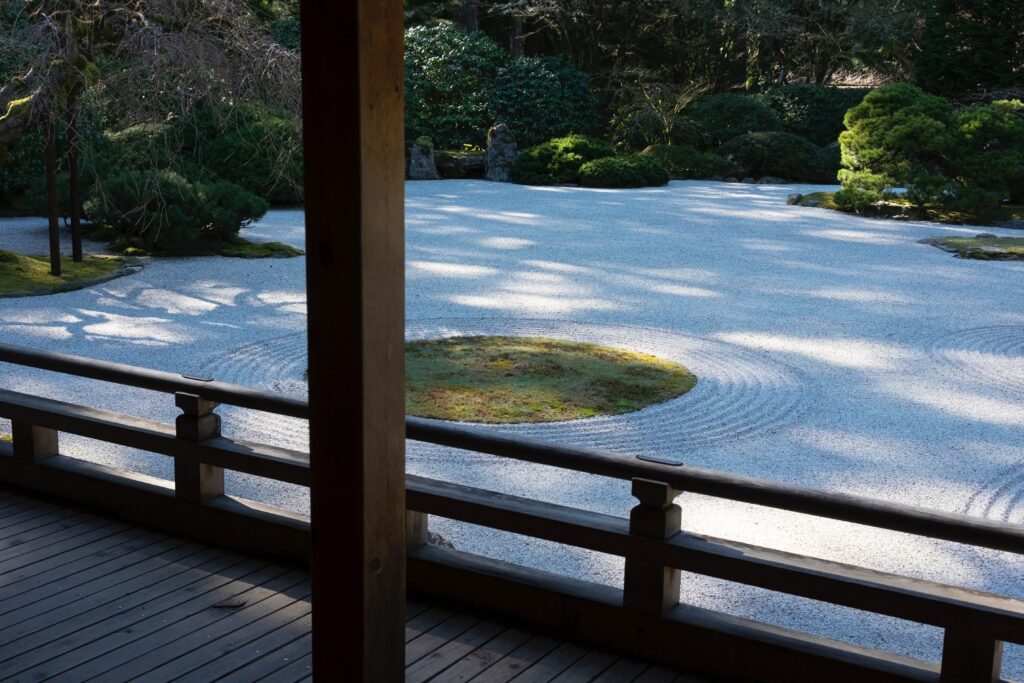

Another philosophical element tied to kintsugi is “mono no aware,” a Japanese term that can be translated as “the pathos of things.” This concept is about the deep, gentle sadness and appreciation of the transient nature of things. Each kintsugi piece tells a story of use, breakage, and repair, symbolizing the transience in our own lives and the beauty of embracing these changes with grace and poise. Kintsugi teaches us to see the beauty in the broken and the repaired.
IV. Kintsugi Technique and Materials
Kintsugi can be approached in two ways: traditional and modern methods. Traditional kintsugi, involving urushi (Japanese lacquer) and gold powder, requires time and skill, highlighting the use of natural materials and craftsmanship. Modern kintsugi, on the other hand, use modern adhesives mixed with metallic powders. In both methods, the basic steps are the following.
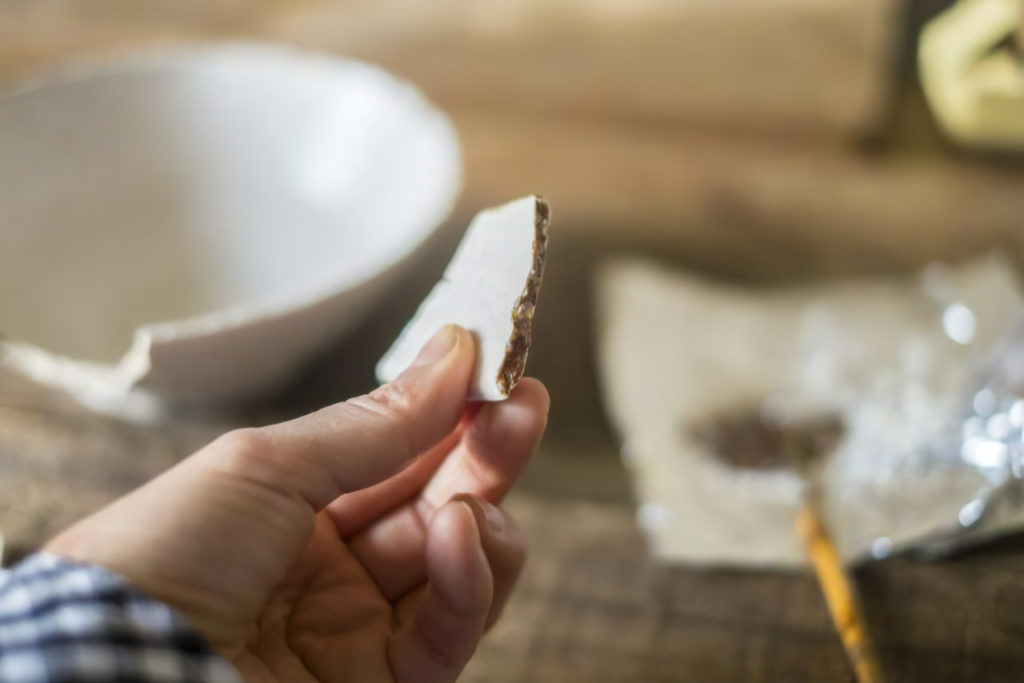
Basic Steps of Kintsugi:
- Gluing the Broken Pieces: The journey of kintsugi starts by carefully aligning and bonding the broken pottery pieces. A special adhesive, traditionally ‘urushi’ lacquer, known for its strength and waterproof qualities, is used. In modern kintsugi method, urushi is replaced with other adhesives. This initial step is crucial for accurately restoring the pottery’s original shape.
- Filling Gaps with Putty or Paste: After the adhesive sets, fill any remaining gaps or cracks with a putty or paste. This step not only reinforces the structure but also creates a smooth base for the subsequent layers.
- Applying Lacquer (or Synthetic Resin): Once the filler has dried, apply a layer of lacquer or synthetic resin. This layer acts as both a sealant, enhancing the durability of the repair, and a primer for the decorative elements to follow.
- Sprinkling Gold Powder: The final and most artistic step involves dusting the lacquered areas with fine gold, silver, or platinum powder. This embellishment highlights the repaired seams, turning the once-flawed pottery into a unique work of art.
Materials Needed for Traditional Kintsugi
- Urushi Lacquer: Serves as a natural adhesive.
- Gold Powder (or Silver Powder): Used to beautifully decorate the repaired areas.
- Tonoko (Finishing Powder): Mixed with the lacquer to create a base for the adhesive.
- Rice Paste (or Flour Paste): Used as a temporary adhesive to fix pieces in place.
Materials Needed for Modern Kintsugi
- Epoxy Resin or Glue: Used instead of lacquer to bond broken pieces.
- Gold Powder or Metallic Powder: Used to decorate the repair area. These are widely available commercially.
- Clear Lacquer: Used as a finish to protect the gold powder.
V. Traditional Kintsugi vs. Modern Kintsugi
Kintsugi, the art of golden repair, showcases its beauty through two distinct approaches: Traditional and Modern.
Traditional Kintsugi: Originating in 15th-century Japan, this method is all about the meticulous and skilled application of materials. It begins with urushi, a natural lacquer, used to bond the broken pieces. The process is deliberate and requires patience, as craftsmen carefully apply gold, silver, or platinum powder to the seams. Traditional kintsugi is a slow process, often spanning weeks or months. The focus here is on the craftsmanship and the physical transformation of the object with natural materials that are food-safe.
Modern Kintsugi: In contrast, Modern kintsugi is a more recent adaptation, perfect for those who are new to the art. It uses modern adhesives mixed with metallic powders, making it more accessible and quicker to complete. This version retains the visual appeal of the traditional method, but with a more straightforward approach. It serves as an excellent introduction to the world of kintsugi.

Both Traditional and Modern kintsugi have their unique charm. Traditional kintsugi offers a deep dive into the craft, showcasing skill and patience, while Modern kintsugi provides a more approachable and time-efficient way to enjoy this art form. Each celebrates the transformation of brokenness into beauty, giving new life and character to repaired items.
VI. How to Start Your Kintsugi Journey
Kintsugi offers a unique and meaningful DIY experience that you can enjoy from the comfort of your home. You can either get hands-on with kintsugi-repair kits, learn through online lessons, or explore informative books. Choose your path and enjoy the journey.
Kintsugi Repair Kits: A great way to begin is by getting a kintsugi repair kit. These kits come equipped with all the necessary materials, including a bonding agent (like urushi or a modern adhesive), metallic powders, and often a step-by-step guide. They’re perfect for beginners looking to get a feel for the process in a practical, DIY manner. Repair kits provide a straightforward, hands-on experience, allowing you to start creating your first piece of kintsugi art right at home.
Online Lessons: For those who prefer a more structured learning experience, enrolling in online kintsugi lessons is a fantastic option. These lessons range from beginner to advanced levels and are often taught by skilled artisans. They offer the advantage of visual learning and often include interactive elements, making the understanding of techniques and processes more comprehensive.
Learning Through Books: If you’re inclined towards a more traditional approach, numerous books delve into the art of kintsugi. These books not only cover the practical aspects of the craft but also explore its history and philosophy. They are ideal for those who enjoy self-paced learning and appreciate the depth and context of kintsugi.
Each of these methods offers a unique way to embark on your kintsugi journey. Hands-on kits are particularly beginner-friendly, providing an easier start by eliminating the hassle of selecting and purchasing various materials and tools.
VII. FAQs on Kintsugi
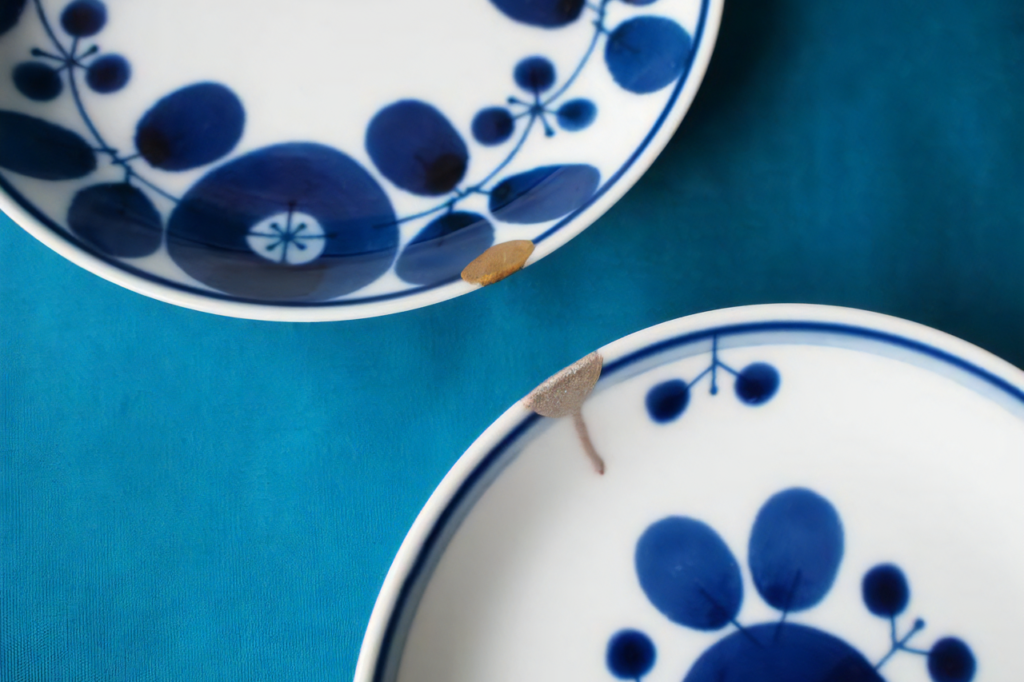
1. Is Kintsugi food safe? Yes, kintsugi can be food safe, depending on the materials used. In traditional kintsugi, natural materials like urushi lacquer are used, which are indeed food safe once fully cured. For modern kintsugi, if you use bio-based, food-safe materials, the repaired items can be used for dishes. However, it’s important to note that many modern kintsugi approaches use regular adhesives, which may not be suitable for food-related items. If you plan to use the repaired dishware for eating, make sure the materials used are explicitly labeled as food safe.
2. What does “Kintsugi” mean in Japanese? “kintsugi” (金継ぎ) in Japanese literally translates to “golden joinery” or “golden repair.” The term beautifully captures the essence of the art – mending broken pottery with gold or other precious metals, creating visually striking lines and celebrating the object’s history and imperfection.
3. How durable is Kintsugi joinery? Kintsugi joinery, especially when done using traditional methods with urushi lacquer, is known for its durability. The lacquer forms a strong bond that can hold the pieces together effectively for a long time. While modern methods might not offer the same level of durability as traditional techniques, they still provide a reasonably robust repair, especially if done with care and quality materials.
4. Can you use a dishwasher or microwave with Kintsugi dishes? It is not recommended to use a dishwasher or microwave with kintsugi dishes, irrespective of whether the repair was done traditionally or using modern methods. The heat and moisture in dishwashers can weaken the adhesive and metallic finish, while microwaves can cause damage due to the metallic elements in the repair. To preserve the beauty and integrity of kintsugi repaired items, it’s best to hand wash them gently and avoid exposing them to extreme temperatures.
Begin Your Journey with Kintsugi
Imagine turning life’s mishaps into a canvas for beauty – that’s the magic of kintsugi. This Japanese art form isn’t just about repairing broken pottery; it’s an invitation to create something uniquely beautiful. Each golden seam becomes a symbol of resilience and a celebration of life’s imperfections. Whether you choose traditional or modern methods, kintsugi offers a fulfilling, creative experience. It encourages us to embrace and showcase our flaws, not just in pottery but in life too.
So why not start your own kintsugi journey? Transform your broken pieces into stunning artworks. Discover the joy of turning the fragments of yesterday into the treasures of tomorrow.

